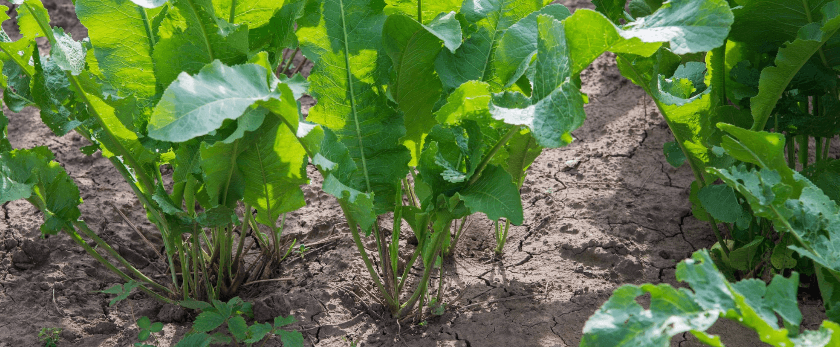Horseradish is a versatile and flavorful root vegetable that is easy to grow in your own backyard. Not only is it a delicious addition to meals, but it also has many health benefits and is a great addition to any eco-friendly garden. In this article, we will discuss how to care for horseradish, the best time to grow it, and common problems that may arise. By following these tips, you can successfully grow your own horseradish and enjoy its spicy kick in your dishes.
How to Care for Horseradish
Watering
Horseradish plants require consistent moisture to thrive. It is important to keep the soil evenly moist, but not waterlogged. Water your horseradish plants deeply once a week, or more frequently during hot and dry weather. Avoid overhead watering, as this can lead to fungal diseases. Instead, water at the base of the plant to keep the leaves dry.
Light
Horseradish plants prefer full sun, but can also tolerate partial shade. Make sure to plant them in an area that receives at least 6-8 hours of sunlight per day. If you are growing horseradish indoors, place it near a sunny window or use grow lights to provide enough light for the plant to thrive.

Soil
Horseradish plants prefer well-draining, loamy soil with a pH level between 6.0-7.0. If your soil is too acidic, you can add lime to raise the pH level. If it is too alkaline, you can add sulfur to lower the pH level. It is also important to ensure that the soil is rich in organic matter. You can add compost or well-rotted manure to the soil before planting to provide essential nutrients for the plant.
Fertilizer
Horseradish plants do not require much fertilizer, but you can add a balanced fertilizer once or twice during the growing season to promote healthy growth. Avoid using high-nitrogen fertilizers, as this can result in excessive leaf growth and less flavorful roots.
Pruning
Pruning is not necessary for horseradish plants, but you can remove any dead or damaged leaves to promote healthy growth. You can also trim back the leaves to prevent them from shading other plants in your garden.
What is the Best Time to Grow Horseradish
The best time to grow horseradish is in the early spring, as soon as the ground can be worked. You can also plant horseradish in the fall, but it may not produce as much root growth. It is important to note that horseradish is a perennial plant, meaning it will continue to grow year after year. Therefore, it is important to choose a permanent location for your horseradish plants.
Common Problems with Horseradish
Pests
Horseradish plants are relatively pest-free, but they can be susceptible to aphids, flea beetles, and root maggots. You can use natural methods such as neem oil or insecticidal soap to control these pests. It is important to avoid using chemical pesticides, as they can harm beneficial insects and pollinators.
Diseases
Horseradish plants can also be affected by fungal diseases such as powdery mildew and clubroot. To prevent these diseases, make sure to provide adequate air circulation and avoid overhead watering. If your plants do become infected, you can use organic fungicides to control the spread.
Weeds
Weeds can compete with horseradish plants for nutrients and water, so it is important to keep the area around your plants weed-free. You can use mulch or hand-pull weeds to prevent them from taking over your horseradish patch.
Conclusion
Growing horseradish is a rewarding experience that can add flavor to your meals and contribute to a more sustainable lifestyle. By following these tips on how to care for horseradish, the best time to grow it, and common problems that may arise, you can successfully grow your own horseradish and enjoy its spicy kick in your dishes. Remember to always use organic and eco-friendly methods to care for your plants and contribute to a healthier planet. Happy growing!










